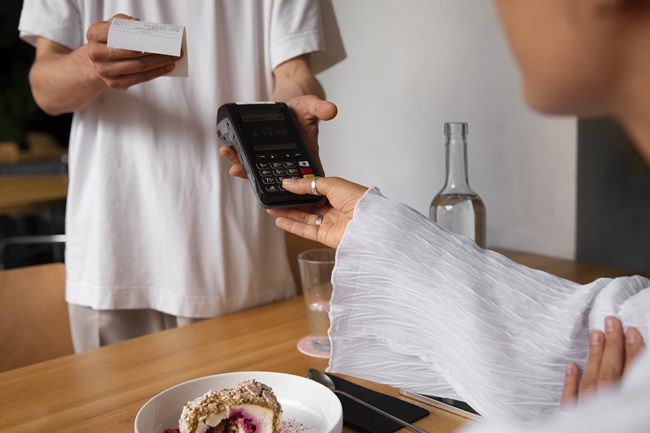 SHARE
SHARE
What Is VOID & How Does It Affect Your Restaurant Business?
Febbi S
VOID is a type of transaction cancellation in the POS system — it may seem trivial, but its potential losses for restaurant businesses are quite significant.
This article will guide you through the meaning of VOID, the financial risks it brings, and how to mitigate them using digital systems.
Common Types of Fraud in Restaurants
In the F&B industry, financial loss doesn’t always come from high operational costs or raw materials. Often, it happens due to internal fraud that exploits operational loopholes.
Some common examples include:
- VOID abuse: The cashier cancels a transaction after receiving payment from a customer and keeps the money without recording it in the system
- Refund/discount abuse: A transaction is canceled or discounts are given without a valid customer or reason.
- Inventory manipulation: Missing ingredients or beverages due to poor recordkeeping.
According to a report by GBQ Consulting, such cases are classified as common restaurant fraud because they’re difficult to detect without a digital tracking system.
What Is VOID?
In the restaurant business, a VOID refers to the cancellation of a transaction that has already been processed in the POS system.
For example, a customer places an order, but the transaction is later voided — the order is canceled, the payment refunded, or the record deleted — while the cashier might still take the cash.
VOID can occur due to several factors:
- Cashier input error
- Customer request to modify an order
- Restaurant policies on complaints or refunds
- Employee misconduct (fraudulent intent).
As stated in GBQ’s report, “Wrongfully voided transactions occur when an employee cancels or deletes a transaction but still charges a customer for the full order.”
Data & Financial Impact of VOID or Fraud
Understanding the quantitative impact helps emphasize that this is not a minor issue.
- Direct Financial Loss: Voided transactions mean cash leaving without being recorded as sales.
- Inaccurate Financial Reports: Inconsistent data can distort business analysis.
- Audit & Compliance Issues: Cancellations without clear reasons raise doubts about management transparency.
- Shrinking Profit Margins: With restaurants operating on thin margins, even a few percentage points lost can be devastating.
According to Mirus Analytics, internal fraud such as VOID and refund abuse can account for up to 4% of total sales — a significant figure for businesses with small margins.
For example:
- A restaurant generating IDR 1 billion per month could lose around IDR 40 million due to fraud.
- If the net profit margin is only 5–10%, that loss can cut profits nearly in half.
Beyond direct losses, inaccurate records make financial analysis and audits harder, while potential data leaks can damage a brand’s reputation.
Tips to Reduce and Prevent VOID Misuse
Source: Freepik.com
Below are practical steps to help control the risk of VOID abuse:
1. Establish Clear Procedures & Train Staff
- Regularly train employees to understand the difference between refunds (actual customer returns) and voids (canceled transactions before settlement).
- Ensure they know who has the authority and what documentation is required for any cancellation.
2. Monitor & Verify Before Approving VOID
- Every VOID should include a clear reason — modern POS systems provide “reason for void” fields for easy tracking.
- Monitor patterns such as frequency, shift, cashier, and time; unusual spikes may signal misconduct.
3. Use Technology & Integrated Systems
- Choose POS software with internal audit features — recording who performed the VOID, when, and on which transaction, linked to their user ID. (Eats365)
- Integrated systems can send automatic alerts when abnormal patterns appear, like repeated voids from the same cashier or during off-peak hours.
4. Apply Access Control & Supervision
- Restrict VOID permissions — only managers should be allowed to cancel transactions.
- Conduct regular reconciliations (daily or weekly) across POS data, inventory, and cash balances.
- Combine digital systems with CCTV or surveillance for stronger oversight.
Why Digital Systems Are the Key
In the digital era, risks don’t come only from people — but also from weak or disconnected systems.
POS platforms such as ESB, equipped with internal security features (role-based access, individual logins, and VOID/discount tracking), can significantly reduce fraud risk in restaurants.(Eats365)
Safer Business with Digital Systems
Fraud can happen anytime, but technology now makes monitoring much easier.
Modern digital systems help restaurant owners manage operations more securely, transparently, and efficiently, through features such as:
- OTP verification for every canceled transaction — only managers or owners can authorize a VOID, preventing cancel-order abuse
- Real-time dashboards that identify suspicious transactions and issue alerts if repetitive VOID activity occurs from the same cashier
- Complete transaction history, recording every change to orders and payments so nothing can be edited or deleted without owner awareness.
With these systems, you can manage your restaurant confidently — every transaction is traceable, and every action is recorded.
FAQ: VOID and Fraud in Restaurant Businesses
1. What is VOID in a restaurant business?
VOID refers to a transaction cancellation in the POS system before it’s completed.
It usually happens due to input errors or order changes, but it can also be misused by staff for fraudulent purposes if there’s no proper control system.
2. What’s the difference between a VOID and a refund?
A VOID is performed before payment is completed, while a refund is issued after the transaction is finalized and the customer has received their money back.
A VOID is typically used for input mistakes, whereas refunds relate to order returns or customer complaints.
3. What are the risks or impacts of VOID transactions on restaurant businesses?
Excessive VOID transactions can cause financial leakage, inaccurate financial reports, and reduced profit margins.
If left unchecked, they may damage the restaurant’s credibility and lead to long-term losses.
4. How much loss can occur from VOID abuse?
According to Mirus Analytics, fraud such as VOID and refund abuse can lead to losses of up to 4% of total restaurant sales — a significant figure for businesses operating on thin 5–10% profit margins.
5. How can restaurants prevent staff from misusing VOID transactions?
Effective prevention methods include:
- Training staff on proper VOID procedures
- Requiring a reason for every canceled transaction
- Restricting cashier access — only managers can authorize VOIDs
- Conducting regular audits and reconciliations between cash, stock, and POS reports.
6. How can technology help reduce restaurant fraud?
Digital POS systems allow real-time transaction monitoring, issue automatic alerts for suspicious VOID activity, and record all transaction changes so they can’t be deleted without authorization.
7. What are the key security features of a reliable POS system for restaurants?
A secure POS should include:
- OTP verification for every transaction cancellation,
- Role-based access to ensure only managers can perform VOIDs,
- Real-time dashboards and audit logs to track every cashier’s activity.
Conclusion
Uncontrolled VOID transactions can lead to financial leakage and undermine the credibility of restaurant financial reports.
However, with digital systems featuring layered verification, transaction tracking, and real-time dashboards, these risks can be minimized.
Want to learn how digital systems can make your restaurant more efficient and secure from fraud? Contact the ESB Team to discuss the right solution for your business.
 SHARE
SHARE




